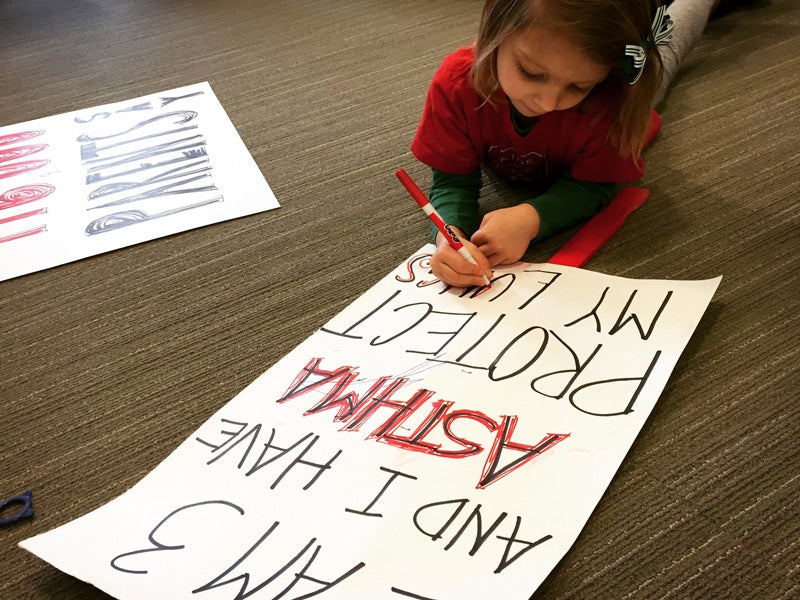A Child’s Bout with Asthma Stresses Need for Strong Smog Protections
Gretchen Dahlkemper, a mom turned national organizer, talks about her daughter’s struggles with asthma and the need for everyone to fight for better protection from air pollution.

This page was published 8 years ago. Find the latest on Earthjustice’s work.
Three years ago, Gretchen Dahlkemper had to rush to the emergency room with her 11-month-old daughter, Fiona, who was struggling to breathe. “Her lips turned blue and she was making a funny noise—at first I thought it was a child’s toy I was hearing.”
It turns out asthma was the cause of Fiona’s breathing problems.
“You can’t imagine the terror you feel when you have a tiny baby who can’t catch her breath,” Dahlkemper said, adding, “You rush to the hospital and hope you can get there in time.”
When Fiona was first diagnosed with asthma, Gretchen and her family lived in Pennsport, a working-class neighborhood that sits below a raised portion of the heavily-trafficked Interstate 95 and close to heavy industry along the Delaware River. Gretchen got rid of her carpets and added an air purifier to limit dust—an asthma trigger—but she couldn’t control the air pollution outside her home’s walls. In the spring of 2013, Gretchen’s family packed up and moved to a new neighborhood—one further from the highway and industry that lines the Delaware River.
Now, Dahlkemper is the national field manager for Moms Clean Air Force where she works to prevent other families from having to deal with air pollutants like ozone that cause asthma and other illnesses.
The part of the city her family lives in now still doesn’t have the greatest air quality, but it’s much better than her previous residence and her daughter’s asthma is now under control.
Unfortunately, many families, especially those with limited incomes, don’t have the option of moving, which is why Dahlkemper feels strongly that both the federal and local government must perform their roles under the Clean Air Act to protect everyone’s air quality.
“We needed to get our kids out of there,” she said. “But most people can’t.”
Parents must become activists on air pollution issues, Dahlkemper says, not only to protect their own families but to help everyone avoid the harm that air pollution causes.
Dahlkemper has spent a lot of time fighting to ensure Obama’s Climate Action Plan to limit air pollution, including carbon and methane emissions from industrial power plants, is as strong as possible. The plan will reduce air pollution and help reduce impacts to the climate.
She has also worked to get better federal protections from ozone pollution—a greenhouse gas that forms when the exhaust of cars, trucks, factories and power plants mix in sunlight and heat up.
Dahlkemper, along with other members of Moms Clean Air Force, are currently calling on the EPA to follow the science and finalize an ozone standard of 60 parts per billion, which the agency’s science advisors have determined would be the most protective of public health. A 60 ppb ozone standard would prevent as many as 6,400 deaths each year and prevent 1.8 million asthma attacks.
Dahlkemper believes that people need to decide how healthy they want their air to be and not leave the decision up to polluters and their lobbyists. Our children’s health depends on it.
Based in Washington, D.C., Keith is the National Communications Strategist for Partnerships and Intersectional Justice.
Earthjustice’s Washington, D.C., office works at the federal level to prevent air and water pollution, combat climate change, and protect natural areas. We also work with communities in the Mid-Atlantic region and elsewhere to address severe local environmental health problems, including exposures to dangerous air contaminants in toxic hot spots, sewage backups and overflows, chemical disasters, and contamination of drinking water. The D.C. office has been in operation since 1978.
